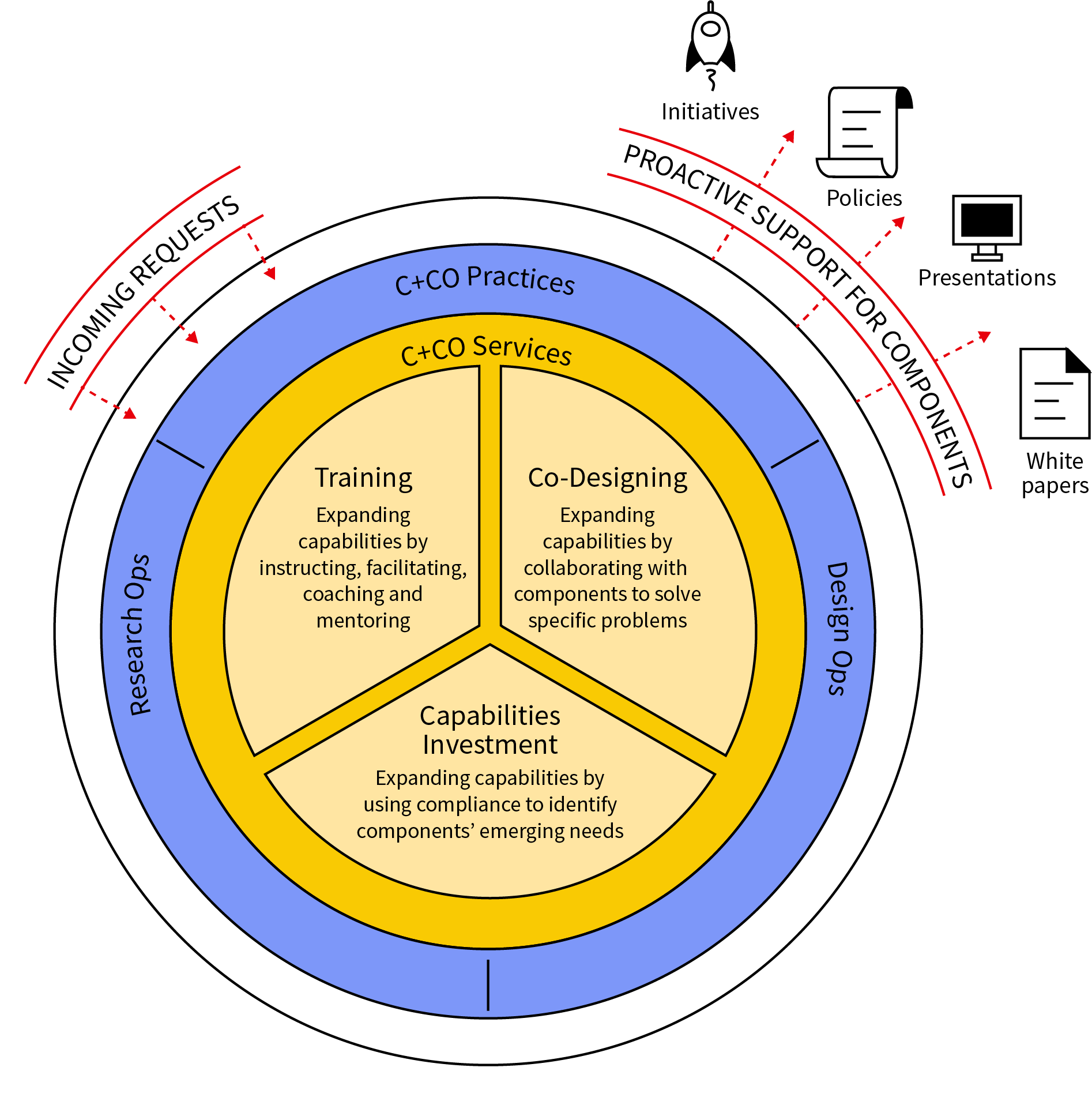Aligning C+CO
A CASE STUDY
My role
Silos in the federal government are insidious, even for the people charged with knocking them down. CX professionals, who often have to remove (or at least reduce) procedural and cultural barriers in order to get organizations to re-center around the needs of customers, can be victims of their own stovepiping.
When DHS’s Office of the Chief Information Officer established its Customer Experience Directorate (CXD) in 2023, the lines of work that separated its divisions were not well defined. By the time I joined the Capacity and Capability Operations Division (C+CO) a couple of years later, people were largely working in isolation. Teams-of-one were common and collaboration between the divisions was limited.
As a result, efforts and activities across CXD, and within C+CO, overlapped haphazardly. This led to inefficiency, frustration and tension.
Solution: Let’s draw a picture together
A model developed collaboratively by the Capacity and Capability Operations Division.
When I started as a branch chief, I treated my onboarding like it was a project and I interviewed my new CXD teammates like they were project stakeholders. I heard about many efforts underway that were similar, but disconnected. I heard complaints about teammates and leadership. I felt the tension of things gone unsaid and sensed the emotional scar tissue that had built up quickly in the directorate’s short existence.
My process to explore and address these issues:
Active listening: I talked to CXD staff, my fellow branch chiefs and CXD’s directors, collecting data without judgement or analysis.
Analysis: Once I had what felt like a critical mass of information, I looked for emerging themes and started playing around with the idea of an operating model for the work of C+CO. (What I really wanted to do was to collaborate with the directors and branch chiefs to come up with a CXD operating model, but as a new person stepping into a contentious environment, I didn’t see a path where that would have been successful.)
Iteration
Hypothesis: I sketched an initial version of a potential operating model. I tried to leverage words and concepts common to CXD, without being bound by them. (I tried to keep in mind that quote attributed to Albert Einstein: “We cannot solve our problems with the same thinking we used when we created them.”)
Collaboration: As soon as I had the first lines on a screen, I started to bounce the model off some of the same folks I had interviewed earlier, both one-on-one and in small groups. The model got better with each review and revision. It’s a process that’s worked well for me over the years in a wide variety of organizations. Rather than using a visual artifact to sell one of my ideas, I use drawing as a common way for different people to talk about the same concept.
Distribution: We iterated on the model until I had the full buy-in of my fellow C+CO team members. Then I walked through it with the CXD branch chiefs outside of my division. Then I shared it during any conversation within CXD where it seemed relevant. (Heck, if I thought anybody would wear them to work, I would have silk-screened the diagram onto t-shirts.)
Impact
By the end of this process, folks in C+CO were talking about themselves as members of a team rather than as individual contributors. They seemed to better understand each other’s work, which led to more collaboration. The model gave us a way to evaluate incoming and potential work.
